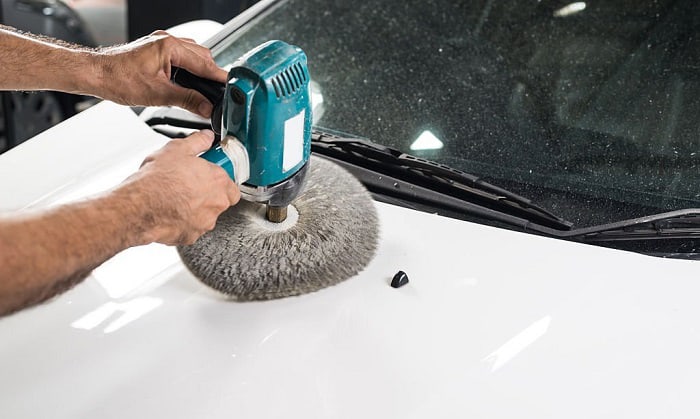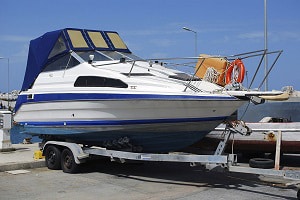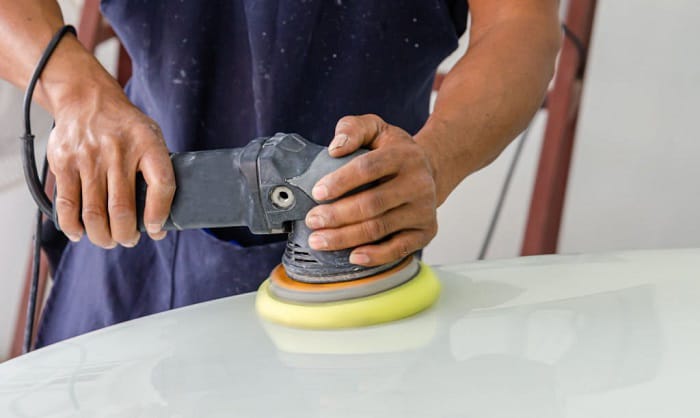Polishing a boat can be tedious but the result is satisfying. As long as you know the right tools and proper procedures, you’ll be able to achieve the desired appearance. Polishing prevents dirt, dust, and other contaminants from sticking on the hull. It also fills petty irregularities. These things are offered by the first layer of polishing.
The second layer of polish delivers protection and a shine so water just runs off. You need to have good judgment on the condition of the existing surface to determine the necessary amount of polishing. But don’t worry; this article will guide you every step of the way.
Table of Contents
Boat Surfaces That Need Polishing
- Fiberglass – This is a common boat construction It’s lightweight, flexible, and durable. You’ll also find it easy to fix when the need arises.
- Stainless steel – Despite what its name suggests, rusting and staining can still occur. This material is usually used for boat fittings. Aluminum boats and pontoons fall under this category as they’re made of steel.
- Fabric – Sails and boat seats have fabric on them that needs polishing. Leather seats are typically found in high-end and old-style vessels. Meanwhile, new models feature vinyl.
- Glass and acrylic – The boat’s windows are glass while the screens are acrylic.
How to Polish a Fiberglass Boat
Here’s a step-by-step guide to fiberglass boat polishing.
1. Securing the boat on the trailer
Boat polishing should be done out of the water. You can complete this task by placing your boat on a trailer. The attachment needs to be secured so the trailer should be stable on flat ground. You also must make sure there are no items haphazardly scattered around. It’s best to clear things out to prevent further mess and more cleaning tasks.
2. Warm water and detergent mixture
You’ll have to scrub your boat with a mixture of a gallon of warm water and 240 ml of boat detergent. Cleaning the hull is preparation for polishing the boat hull with the help of a microfiber towel or sponge. One of the goals is to remove stuck dirt and debris so you need to put some pressure while scrubbing.
3. Rinsing and drying
Use a clean and damp microfiber cloth to ensure that every bit of detergent is eliminated. If you allow it to dry on the hull, it will be difficult to remove. Wipe the surface in circular motions until it’s dry to touch.
4. Removing greases
To get rid of any presence of grease on your boat, dip a clean rag in acetone and wring it to remove the excess amount. Again, wipe circularly. Once you’re done with a certain spot, fold the rag to work with its clean side. Change the rag when all sides are dirty and replace it with a new one. Acetone can irritate the eyes and nose so wear a facemask and safety glasses.
5. Removing stains
Choose effective hull cleaners like Star Brite Instant Hull Cleaner, MEGUIAR’s Boat Wash, and Spray Nine Marine Cleaner. Then, use a paintbrush to apply it directly to the stained area. Give it around 10 minutes to work its wonders. Then, you can rinse.
6. Sanding for heavily oxidized part
Boats can be heavily oxidized with heavy discoloration and a cloudy appearance. These things will happen when you don’t use boat cover. If the damage develops, you have no choice but to sand it. Let the sandpaper (2,000 grit) soak in warm water and remove the extra amount of water.
You have to spray the surface with water for lubrication. When rubbing the sandpaper, apply a bit of pressure and do it horizontally to efficiently take off the oxidation.
7. Selecting the Ideal Polish and Wax
3M boat polish and wax have three levels of formulation: light, medium, and heavy. You can choose the formulation based on the condition or needs of your boat.
Compounding and polishing are essential to remove swirls and scratches. They’re more than just a boat polisher as there is added wax is added to their formula.
You may also get the MEGUIAR’s Restoration System which includes oxidation remover, polishers, and wax. Apart from choosing the ideal polish and wax, you have to ensure you buy enough for the entire boat. You need to get the strongest formulation if your boat has pitted areas. But be careful when using it, as it can burn thin layers like the covering.
8. Polishing the boat
Start at the back when polishing a fiberglass boat and move towards the bow. Then, do the following steps:
- Step 1: You can polish a boat with a buffer or hand.
- Step 2: Work in circular motion so you won’t create streaks on the surface.
- Step 3: Be realistic on what you can handle efficiently and work in the span of two feet at a time.
- Step 4: Work with a buffer or polishing machine until the surface becomes glossy.
- Step 5: You have to stop when you have uncovered the gel coat.
- Step 6: Set the electric buffer at the lowest speed with the pad touching the surface before turning the device on. Follow these simple steps so you won’t create splatter. You may need several pads for polishing gel coat layers so prepare some.
Polishing Aluminum and Pontoon Boats or Vessels Without Paint
Pick a cleaner that is formulated for aluminum boats. Getting Chemical Guys Heavy Metal Polish Restorer and Protector or Star Brite Ultimate Aluminum Cleaner & Restorer and other boat polish products is a wise decision since they work as a cleaner, brightener, and polisher.
Low-micron cleaners found in a product are antioxidants that can revive an old-looking aluminum boat. Hence, you do the cleaning and buffing on unpainted vessels.
Boat Polishing Tips
1. The need to wax
After polishing, it’s recommended to wax your boat. This process will add shine, which highlights the before and after look. Regarding this matter, you have to know the different types of boat wax and pick the one that suits your craft.
- Carnauba-based wax – It has a superb quality since it can create two layers of durable protection for your boat. With regular use, you can maintain the polished appearance of your boat and protect it against acid rain, UV, dirt, and bugs. You can check Meguiar’s Pure Carnauba Blend or 303 Spray Wax.
- Metal wax – You can apply it on stainless steel, copper, chrome, aluminum, and brass. It can also be used on marine accessories like a propeller. It’s available as a liquid or paste.
- Fiberglass wax – You have to rub or buff this wax on your fiberglass boat.
2. Aluminum boats and pontoons
Aluminum boats with or without paint are polished in the same way. When there’s a need to cover scratches and discoloration, you have to get a paint patch-up kit like Marine-Tex Gluvit Waterproof Epoxy Sealer or MagicEzy 9 Second Fix Chip. When you polish your aluminum boat, it’s easy to make its optimum look consistent.
Polishing a pontoon is not different from how it’s done on other vessels. However, some considerations are required based on the type of pontoon you have. Most of them are identified as tubes since they’re composed of metal. Thus, polishing them is the same as what is done on every aluminum boat. You can use the same products.
If your pontoon has fiberglass parts, refer to the polishing procedures for fiberglass boats. Remeber that it’s crucial to know the specifications of your boat before polishing and waxing.
3. Stainless steel propeller
Aside from the hull or marine accessories, you need to pay attention to the lower parts like the propeller. Since it’s made of stainless steel, you have to be concerned about rust and corrosion. Cleaning is necessary if the propeller is frequently exposed to saltwater. Apart from saltwater, corrosion can be brought by dirt, marine growth, and chemicals.
Before polishing a stainless steel propeller, you have to clean it with detergent and a sponge. It’s not necessary to use a wire brush, steel wool, or sandpaper. Then, you can polish the propeller to maintain its shine and protect it from harsh outdoor elements.
Benefits of Polishing a Boat
- Protection against UV rays
- Improvement of the durability of paint, finish, or surface of your boat
- Enhancement of shine and depth of the boat’s surface
- Prevention of dirt build-ups
The Takeaway to Polish Your Boat
It’s worthwhile to spend time and effort polishing a boat. It’s one of the maintenance procedures that ensure the preservation of your boat’s condition. It will prolong the nice appearance as discoloration, marks, scratches, and fading are eliminated. Moreover, polishing promotes the shine and luster of your boat’s finish or coating.

Ten years of enjoying countless trips on boats never made me love them any less! So I am here to put all those experiences into good use for other boaters who want to have a safe and fun trip with their friends and families.






